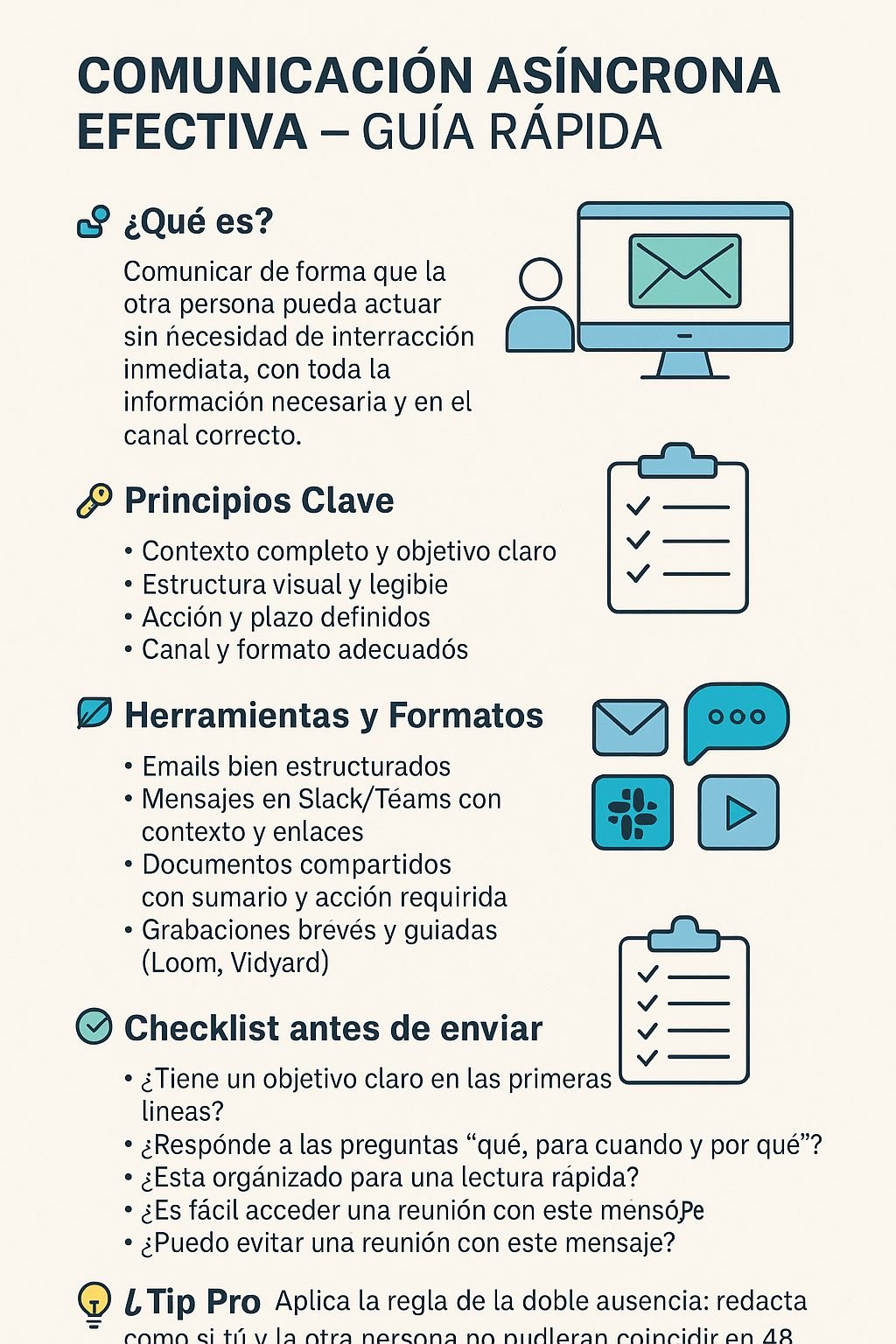Objective: Master non-simultaneous communication to maintain flow, clarity, and efficiency in projects, reducing interruptions and avoiding information loss.
Clear explanation for a DM (with or without experience)
This content is restricted to subscribers
Why this topic is key
-
Saves time: Fewer meetings and fewer interruptions.
-
Avoids bottlenecks: People can move forward without needing to align in real time.
-
Scales better: Large or distributed teams can stay aligned.
-
Reduces misunderstandings: Clear, structured messages leave less room for misinterpretation.
-
Promotes traceability: There’s a record of conversations and agreements.
Practical checklist
Before sending an asynchronous message, check:
This content is restricted to subscribers
Best practices
This content is restricted to subscribers
Errors to avoid
This content is restricted to subscribers
Illustrative examples
This content is restricted to subscribers
Possible uses of AI to optimize this area
This content is restricted to subscribers
This content is restricted to subscribers


Leave a Reply